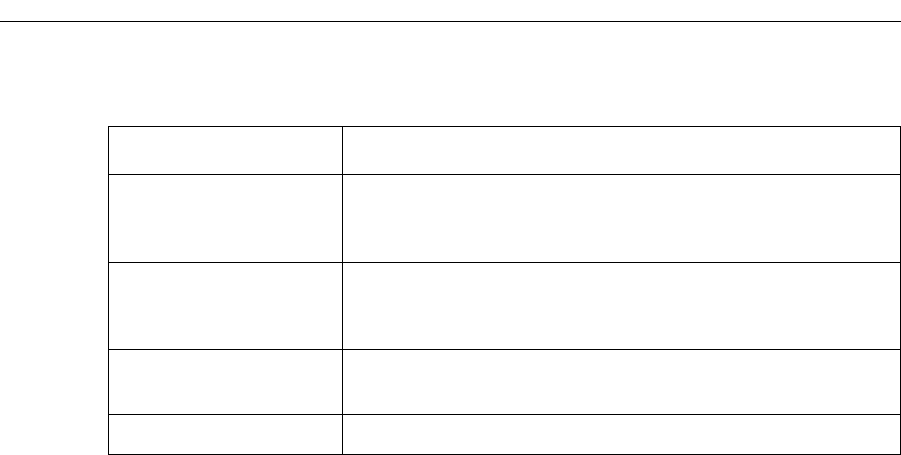Network Router User Manual
Table Of Contents
- Notices
- Contents
- About This Manual
- Introduction
- Hot Swapping Line Cards and Control Modules
- Bridging Configuration Guide
- Bridging Overview
- VLAN Overview
- Configuring SSR Bridging Functions
- Monitoring Bridging
- Configuration Examples
- SmartTRUNK Configuration Guide
- ATM Configuration Guide
- Packet-over-SONET Configuration Guide
- DHCP Configuration Guide
- IP Routing Configuration Guide
- IP Routing Protocols
- Configuring IP Interfaces and Parameters
- Configuring IP Interfaces to Ports
- Configuring IP Interfaces for a VLAN
- Specifying Ethernet Encapsulation Method
- Configuring Jumbo Frames
- Configuring Address Resolution Protocol (ARP)
- Configuring Reverse Address Resolution Protocol (RARP)
- Configuring DNS Parameters
- Configuring IP Services (ICMP)
- Configuring IP Helper
- Configuring Direct Broadcast
- Configuring Denial of Service (DOS)
- Monitoring IP Parameters
- Configuring Router Discovery
- Configuration Examples
- VRRP Configuration Guide
- RIP Configuration Guide
- OSPF Configuration Guide
- BGP Configuration Guide
- Routing Policy Configuration Guide
- Route Import and Export Policy Overview
- Configuring Simple Routing Policies
- Configuring Advanced Routing Policies
- Multicast Routing Configuration Guide
- IP Policy-Based Forwarding Configuration Guide
- Network Address Translation Configuration Guide
- Web Hosting Configuration Guide
- Overview
- Load Balancing
- Web Caching
- IPX Routing Configuration Guide
- Access Control List Configuration Guide
- Security Configuration Guide
- QoS Configuration Guide
- Performance Monitoring Guide
- RMON Configuration Guide
- LFAP Configuration Guide
- WAN Configuration Guide
- WAN Overview
- Frame Relay Overview
- Configuring Frame Relay Interfaces for the SSR
- Monitoring Frame Relay WAN Ports
- Frame Relay Port Configuration
- Point-to-Point Protocol (PPP) Overview
- Configuring PPP Interfaces
- Monitoring PPP WAN Ports
- PPP Port Configuration
- WAN Configuration Examples
- New Features Supported on Line Cards

SmartSwitch Router User Reference Manual 317
Chapter 23: RMON Configuration Guide
Control Tables
Many RMON groups contain both control and data tables. Control tables specify what
statistics are to be collected. For example, you can specify the port for which statistics are
to be collected and the owner (name, phone, or IP address) for that port. You can change
many of the entries in a control table with rmon commands. Data tables contain the
collected statistics. You cannot change any of the entries in a data table; you can only view
the data.
When you specify the Lite, Standard, or Professional RMON groups, you have the option
of creating default control tables. A default control table creates a control table entry for
every port on the SSR. Creating default control tables essentially configures data collection
for every port on the SSR for certain RMON groups. If you do not want this, you can
choose not to create the default control tables and then configure the appropriate control
tables for the data you wish to collect. Even if you use the default control tables, you can
always use the rmon commands to modify control table entries.
If you choose to create default control tables, entries are created in the control tables for
each port on the SSR for the following groups:
Lite groups: Etherstats
History
Standard groups: Host
Matrix
Professional groups: Protocol Distribution
Address Map
Application Layer/Network Layer Host
Application Layer/Network Layer Matrix
Application Layer
Matrix (and Top N)
Monitors traffic at the application layer for protocols defined
in the Protocol Directory. Top N gathers the top n application
layer matrix entries.
Network Layer Matrix
(and Top N)
Monitors traffic at the network layer for protocols defined in
the Protocol Directory. Top N gathers the top n network
layer matrix entries.
Address Map Records MAC address to network address bindings
discovered for specified ports.
User History Records historical data on user-defined statistics.
Table 12. Professional RMON Groups
Group Function










